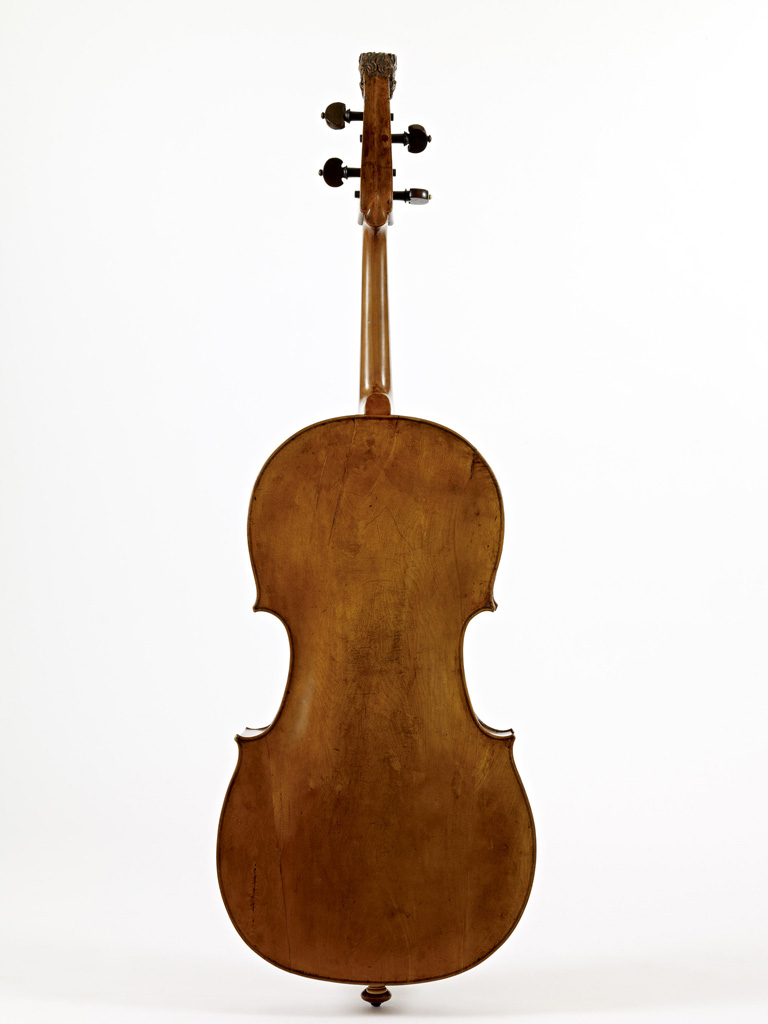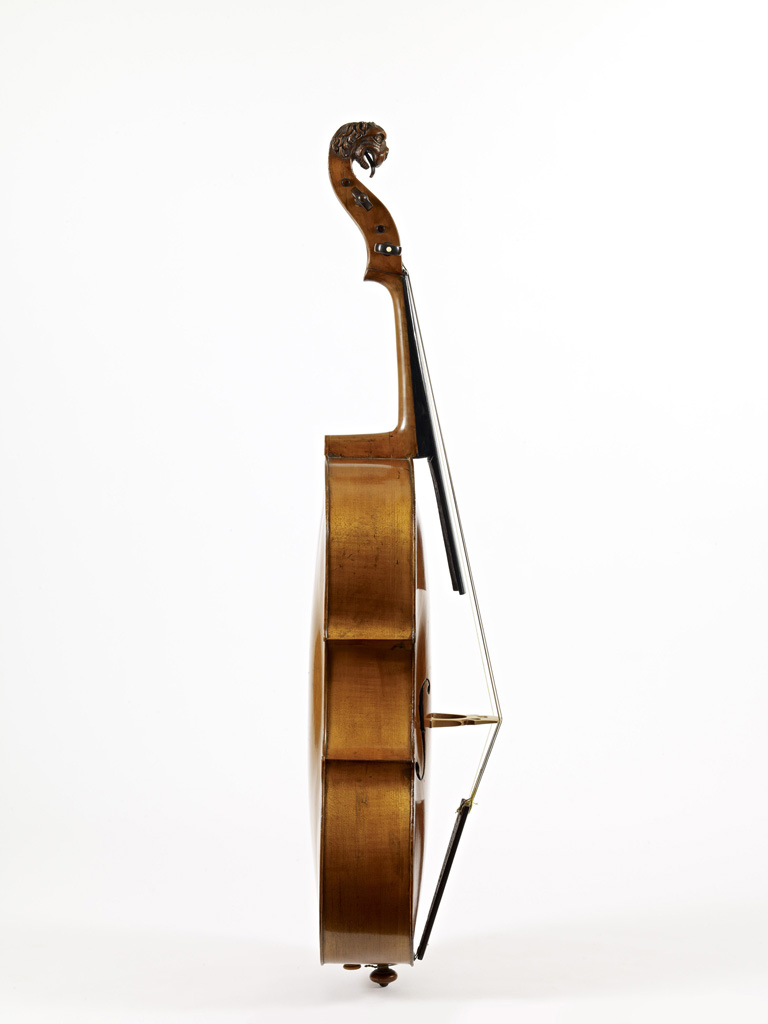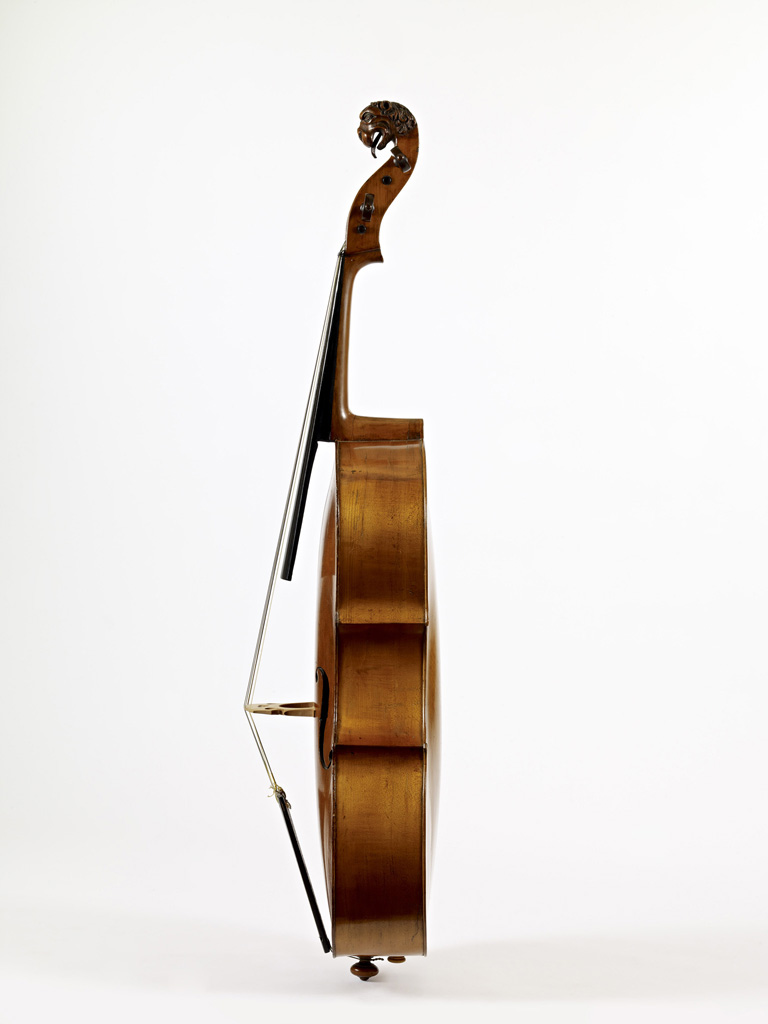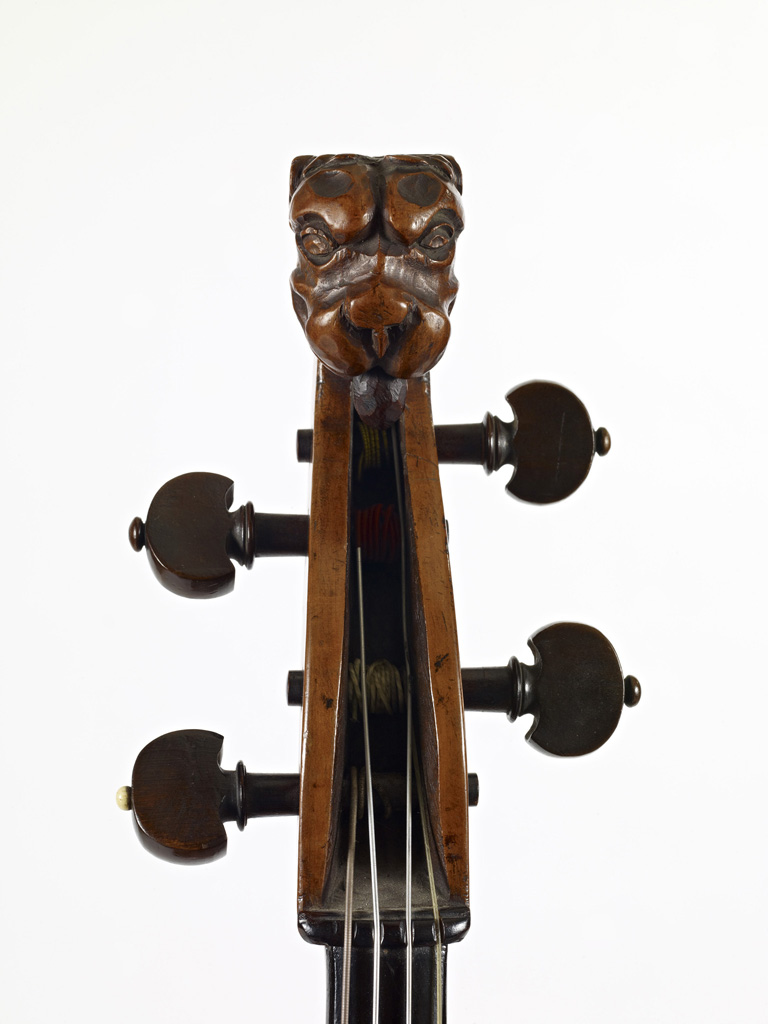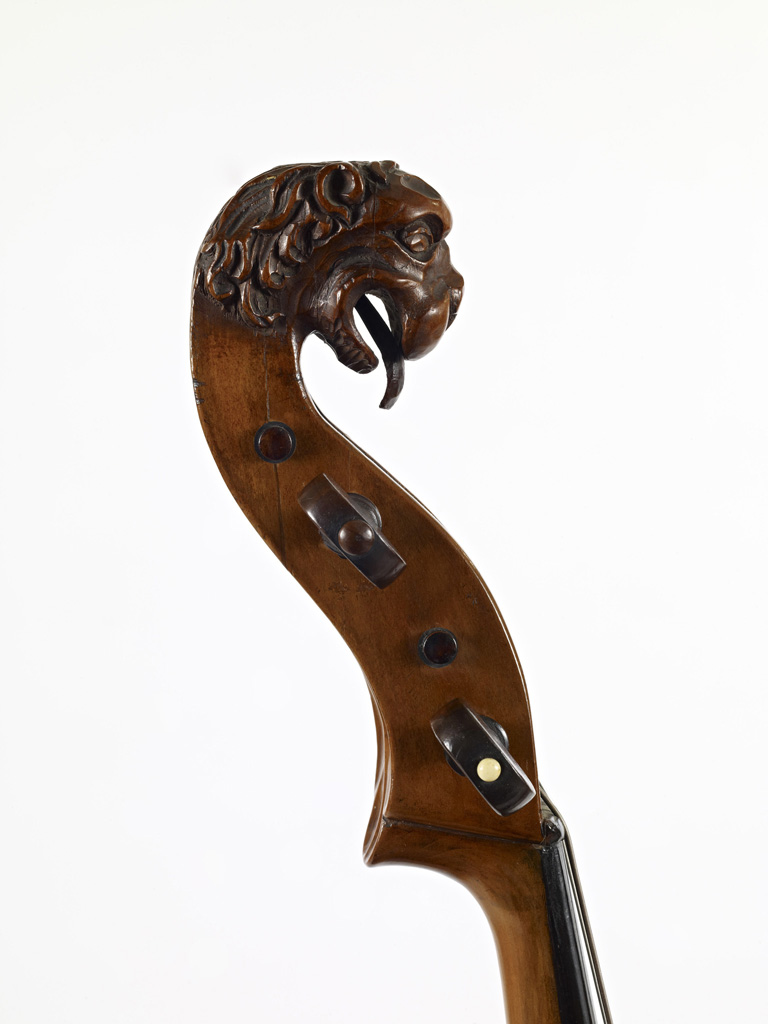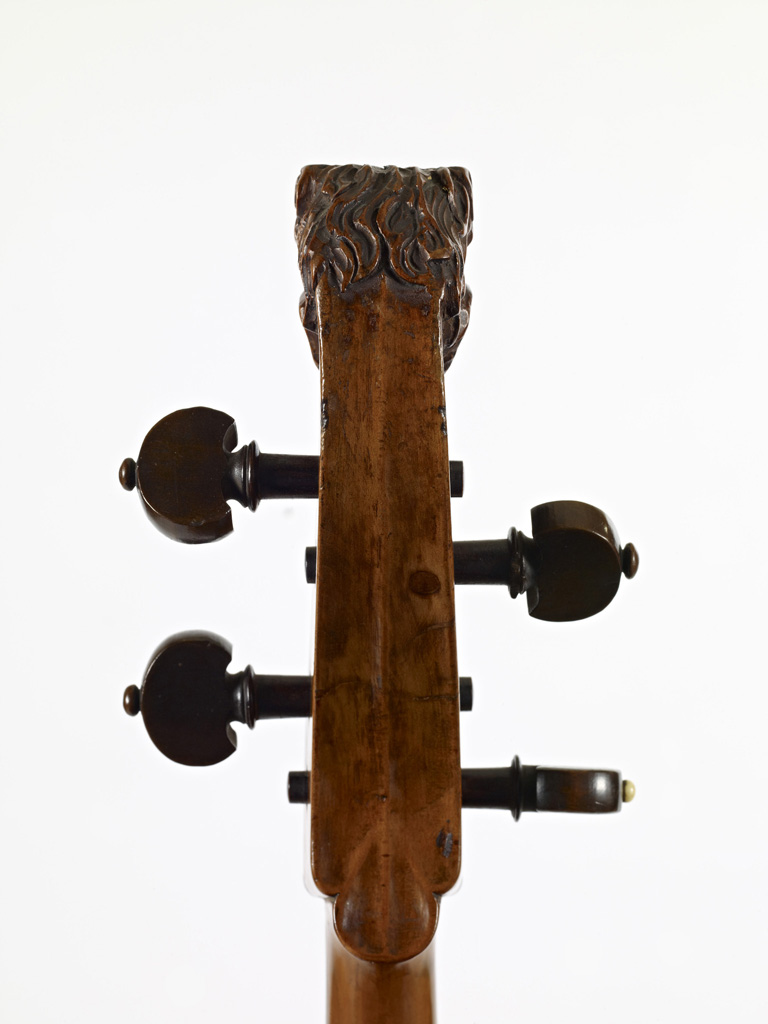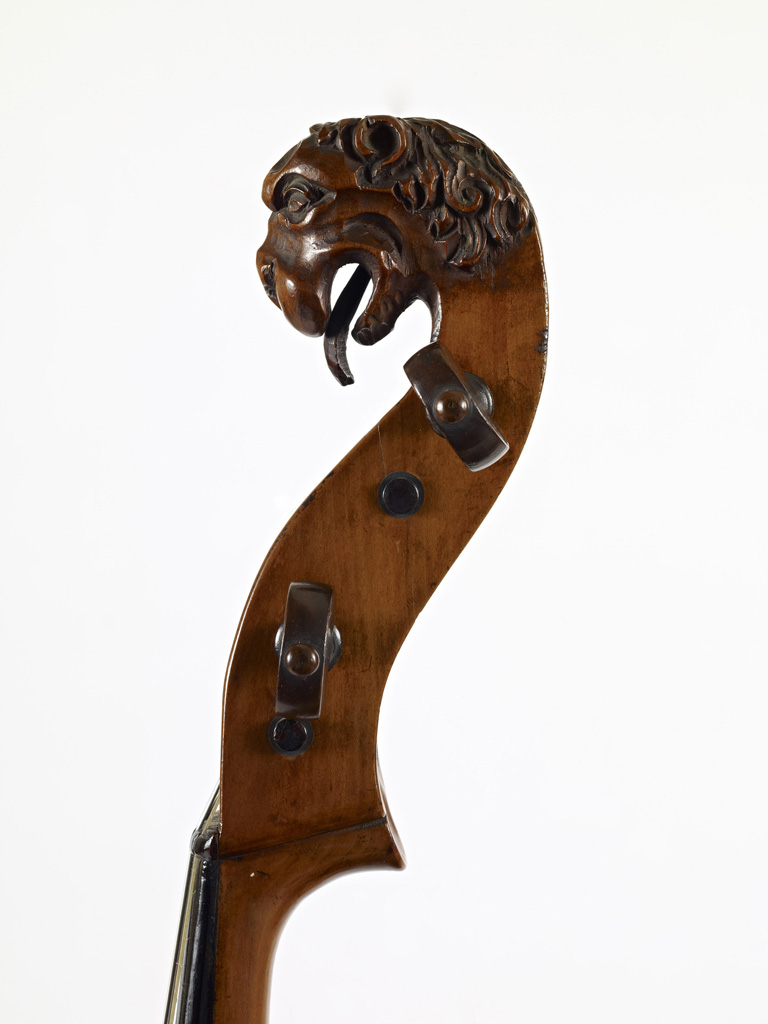The table is of two pieces of slightly wavy grain with 10 to 4 growth rings per cm. The purfling consists of two scribed lines.
The back is three pieces of plain slab-cut maple. One piece runs the length of the back and covers the whole upper and center bouts, and two wide symmetrical wings joined at an angle form the outer edges of the lower bout. The purfling is the same as on the table.
The ribs are five pieces of plain maple.
The original neck of plain maple is attached to the outside of the ribs. The lion head is competently carved but without much detail. Three of the pegs are of stained wood and may be original.
The original black painted fingerboard incorporates a very thick wedge. The tailpiece also appears to be painted.
The boxwood endbutton is possibly original. A second hole drilled below it, probably for an endpin, is now closed with a plain wooden button.
The varnish is pale golden brown.
Body length 66.2
Body width
upper bout 30.1
center bout 20.5
lower bout 36.5
String length 59.0
Rib height
top block 10.5
upper corners 10.7
lower corners 10.8
bottom block 11.2
Label
Antoni Wachter Geigenmacher
in Faulenbach bey Fussen
[handwritten]
Bought in August 1972 from Alain Vian, Paris


